File Storage In Azure
Overview
Azure provides scalable and secure file storage solutions. Azure File Storage offers fully managed, accessible, and durable file shares accessible from multiple platforms using SMB or REST APIs. It allows organizations to store and share files in the cloud while supporting legacy applications. Azure File Sync enables seamless synchronization between on-premises servers and the cloud, optimizing data availability and reducing storage costs. Azure Blob Storage, on the other hand, is a cost-effective option for unstructured data storage, suitable for various use cases like backups, media files, and content distribution. Together, these services offer a comprehensive and flexible file storage solution in Azure.
Introduction
The digital revolution has ushered in an era where data is at the heart of every organization's success. As businesses grow and generate vast amounts of information, the demand for reliable, scalable, and cost-effective storage solutions has soared. In response to this need, cloud-based file storage services have emerged as a game-changer, revolutionizing how data is stored, accessed, and shared. Among the leading providers in this domain is Microsoft Azure, a comprehensive cloud computing platform that offers a suite of powerful file storage solutions tailored to meet the diverse needs of businesses and developers worldwide. From Azure File Storage, enabling seamless data sharing, to Azure File Sync, facilitating synchronization between on-premises and cloud storage, Azure empowers organizations to harness the full potential of cloud-based file storage. In this digital era, understanding and leveraging these cutting-edge storage services have become essential for unlocking unparalleled efficiency and productivity.
Azure File Storage is a fully managed cloud-based storage service provided by Microsoft Azure. It serves as a centralized repository for storing and sharing files, accessible from anywhere, at any time, and on any device. Leveraging familiar protocols like Server Message Block (SMB) and REST APIs, Azure File Storage seamlessly integrates with existing applications and workflows, streamlining data access and collaboration.
Azure File Storage Service
Storage Account:
A fundamental component for storing data objects like files, blobs, tables, and queues in Azure. Offers configuration options for redundancy, access control, and performance.
Share:
Top-level directory in Azure File Storage for easy file organization and concurrent access by multiple clients.
Directory:
Subfolder within an Azure File Share, creating a hierarchical structure for efficient data organization.
File:
Individual data objects are stored in an Azure File Share, supporting standard file operations and collaborative access.
URL Format:
The URL format for accessing files in Azure File Storage follows a standardized structure. The URL typically consists of several components:
- <storage-account-name>: This is the name of the Storage Account that contains the Azure File Share.
- <file-share-name>: This is the name of the Azure File Share that contains the file.
- <file-path>: This represents the path to the specific file within the Share, including any necessary directories. , For example,, if you have a Storage Account named mydatastorage, a File Share named "documents," and a file named "report.docx" located in the root directory of the Share, the URL to access this file would be:
File Storage Data Access Methods in Azure:
Direct Cloud Access:
Direct Cloud Access refers to accessing and managing files stored in Azure File Storage directly from the cloud without the need for any on-premises synchronization or caching. Users and applications can interact with the files in the cloud through standard file operations using the Server Message Block (SMB) or REST APIs. This method is suitable for scenarios where real-time access to files from various locations or applications is required.
Azure File Sync:
Azure File Sync complements direct cloud access by enabling synchronization between on-premises file servers and Azure File Storage. It offers a tiered approach to storage, allowing frequently accessed data to reside on-premises while less frequently accessed data is stored in the cloud. This approach optimizes performance and reduces costs, as only the most relevant data is kept on local servers.
Data Transfer Methods in Azure:
Data transfer is a critical aspect of cloud computing, especially when migrating data to Azure or synchronizing data between on-premises and cloud storage. Azure offers various data transfer methods to suit different scenarios and requirements. Let's explore four prominent data transfer methods in Azure: Azure File Sync, Azure Import/Export, Robocopy, and AzCopy.
Azure File Sync:
Azure File Sync enables seamless synchronization of on-premises file servers with Azure File Storage. It provides a hybrid cloud storage solution, allowing organizations to keep frequently accessed files on-premises for low-latency access while archiving less frequently accessed data in the cloud for cost-efficiency. With Azure File Sync, changes made to files on one server are automatically propagated to other connected servers and the cloud, ensuring data consistency and availability.
Azure Import/Export:
Azure Import/Export is a data transfer method designed for large-scale data migration into or out of Azure Blob Storage and Azure Files. It allows organizations to physically ship hard drives containing data to Azure data centres for importing or exporting data, avoiding the limitations of internet bandwidth for massive datasets.
Robocopy:
Robocopy is a command-line tool available in Windows operating systems that facilitates efficient and reliable file transfer and synchronization between local file systems and Azure File Storage. It provides a simple way to copy files to and from Azure File Shares, supporting complex file transfer scenarios with options for mirroring and retrying.
AzCopy:
AzCopy is a command-line tool specifically designed for high-performance data transfers to and from Azure Blob Storage and Azure File Storage. It provides fast, reliable, and secure data transfer options, making it a popular choice for moving large amounts of data to and from Azure.
Creating a File Storage in Azure (Step by Step)
creating-a-file-storage-in-azure-step-8
Creating a File Storage in Azure is a straightforward process that can be accomplished through the Azure portal.
Follow these step-by-step instructions to set up a File Storage account in Azure:
-
Step 1: Sign in to the Azure Portal: If you do not have an Azure account, sign up for a free trial or create a new account. Once you have an account, log in to the Azure portal at https://portal.azure.com.
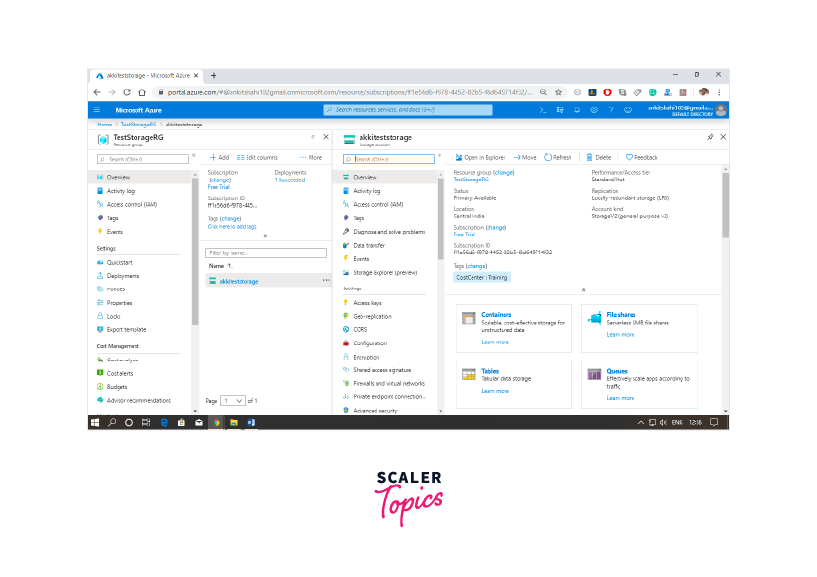
-
Step 2: Create a New Storage Account: In the Azure portal, click on "Create a resource" and search for "Storage account." Select "Storage account - blob, file, table, queue" from the search results.
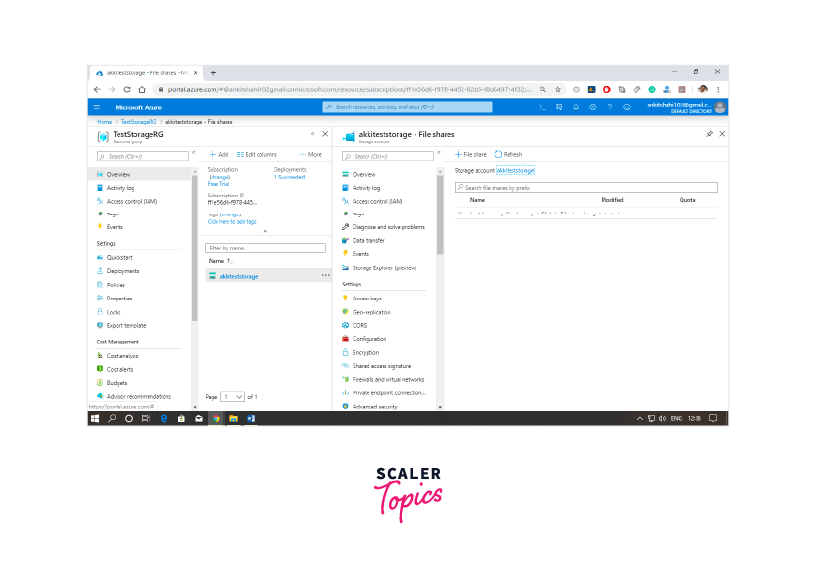
-
Step 3: Fill in the Storage Account Details: In the "Create storage account" window, provide the following information:
- Subscription: Choose the Azure subscription under which you want to create the storage account.
- Resource Group: Either select an existing resource group or create a new one to organize your resources.
- Storage Account Name: Enter a globally unique name for your storage account. The name must be in lowercase and can contain numbers and hyphens.
- Location: Choose the region where you want your storage account to be located. Consider the location that best serves your data access needs.
- Performance: Choose the performance tier for your storage account, such as Standard or Premium, based on your workload requirements.
- Account Kind: Select "StorageV2" to enable the latest features, including Azure File Storage.
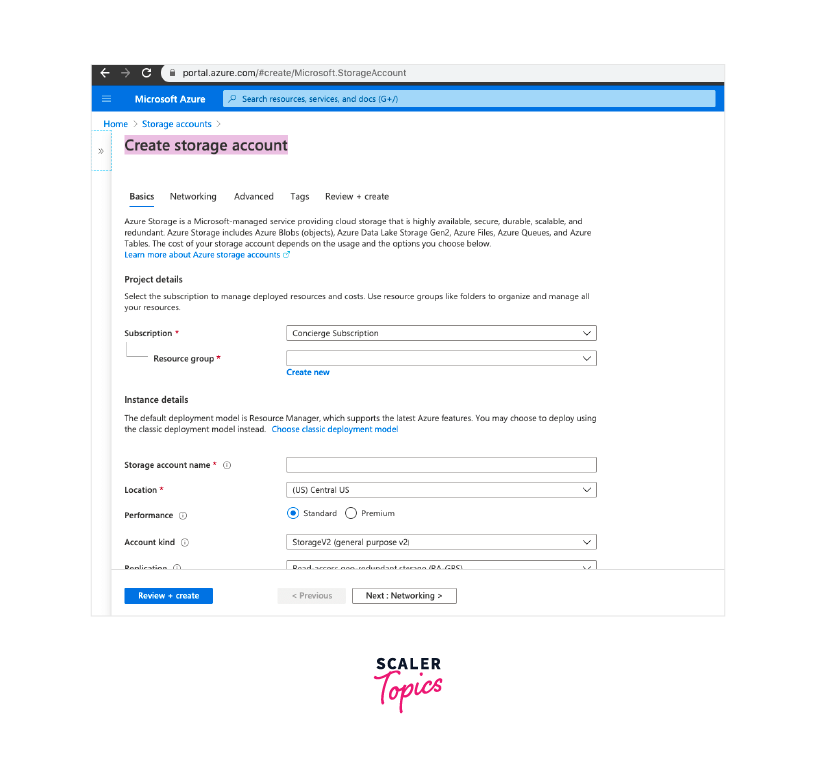
-
Step 4: Configure Advanced Settings (Optional): You can configure advanced settings, such as Virtual Network (VNet) integration, firewalls, and advanced data replication options. For basic file storage creation, you can leave these settings as their default values.
-
Step 5: Review and Create: Review the settings you have provided, and click "Review + create" at the bottom of the window to validate the configuration.
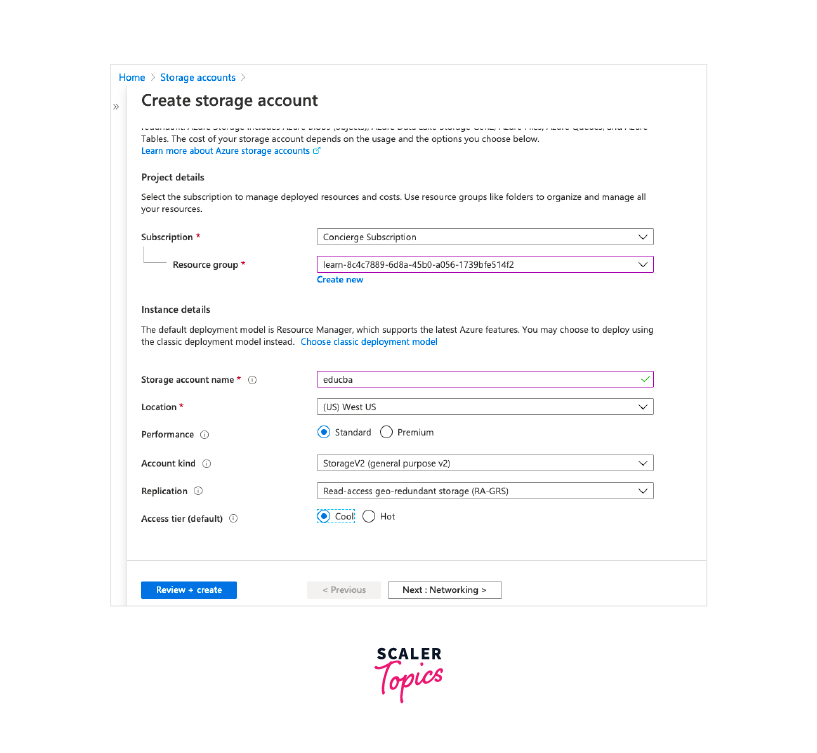
-
Step 6: Create the Storage Account: After the validation is successful, click "Create" to start the creation process. The storage account creation may take a few minutes to complete.
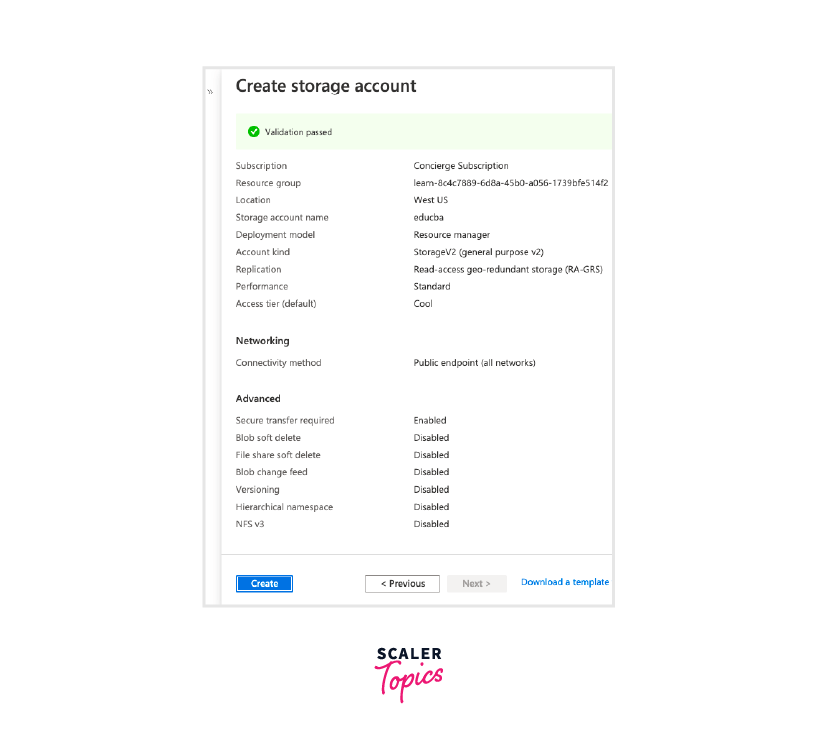
-
Step 7: Access Azure File Storage: Once the storage account is successfully created, navigate to the storage account in the Azure portal. In the storage account overview page, click on "Files" in the left-hand menu to access the Azure File Shares.
-
Step 8: Create an Azure File Share: In the "File shares" page, click on the "+ File share" button to create a new file share. Provide a unique name for the file share and specify the quota for the share if needed.
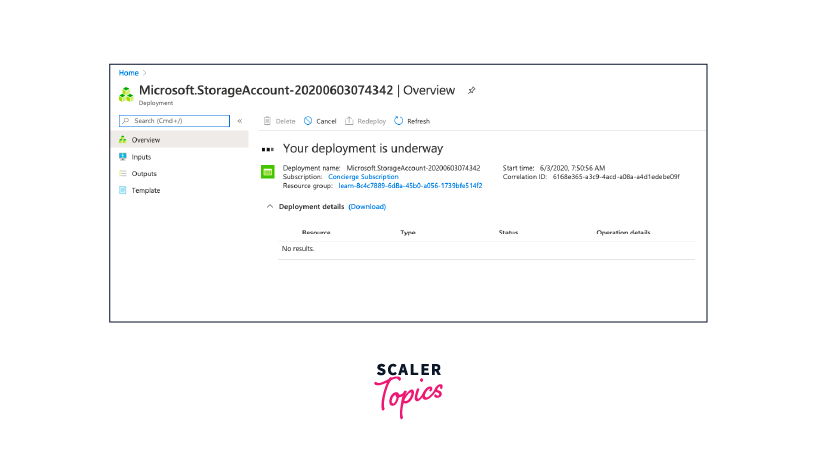
-
Step 9: Access Azure File Storage from Clients: To access the Azure File Share from client machines or applications, use the SMB or REST API URL provided in the "Connect" pane of the Azure File Share. You can map the Azure File Share as a network drive or use the REST API to interact with the files programmatically.
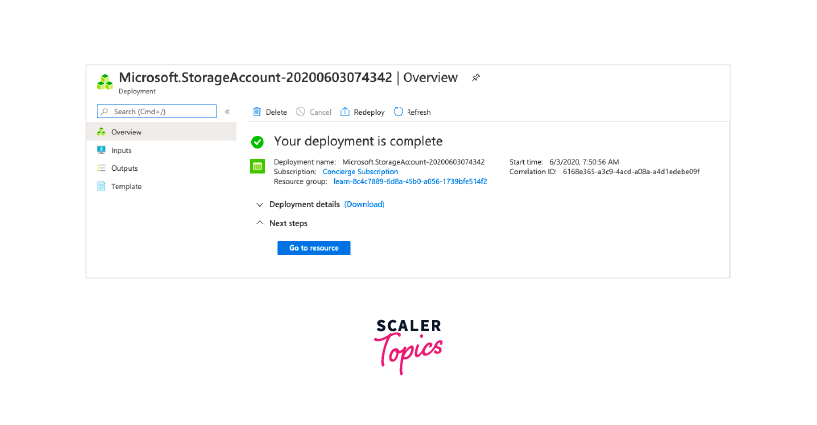
Conclusion
- File storage is a crucial aspect of modern computing, enabling data organization, access, and sharing across platforms and applications.
- Azure File Storage in Microsoft Azure is a fully managed cloud-based storage service, that provides scalable and secure file storage solutions.
- Azure File Storage offers features like scalability, accessibility from various platforms, redundancy, and integration with Azure services, making it a comprehensive file storage solution.
- Azure File Sync complements Azure File Storage, facilitating seamless synchronization between on-premises file servers and the cloud, optimizing data availability and reducing storage costs.
- Azure Import/Export enables large-scale data migration into or out of Azure Blob Storage and Azure Files, using physical shipment of hard drives for faster transfer of massive datasets.
- Robocopy and AzCopy are useful command-line tools for efficient and reliable file transfer to and from Azure File Storage, with options for mirroring, parallel transfers, and data resumption.
- When creating a File Storage in Azure, users can choose between Direct Cloud Access and Azure File Sync based on their data access needs and existing infrastructure.
